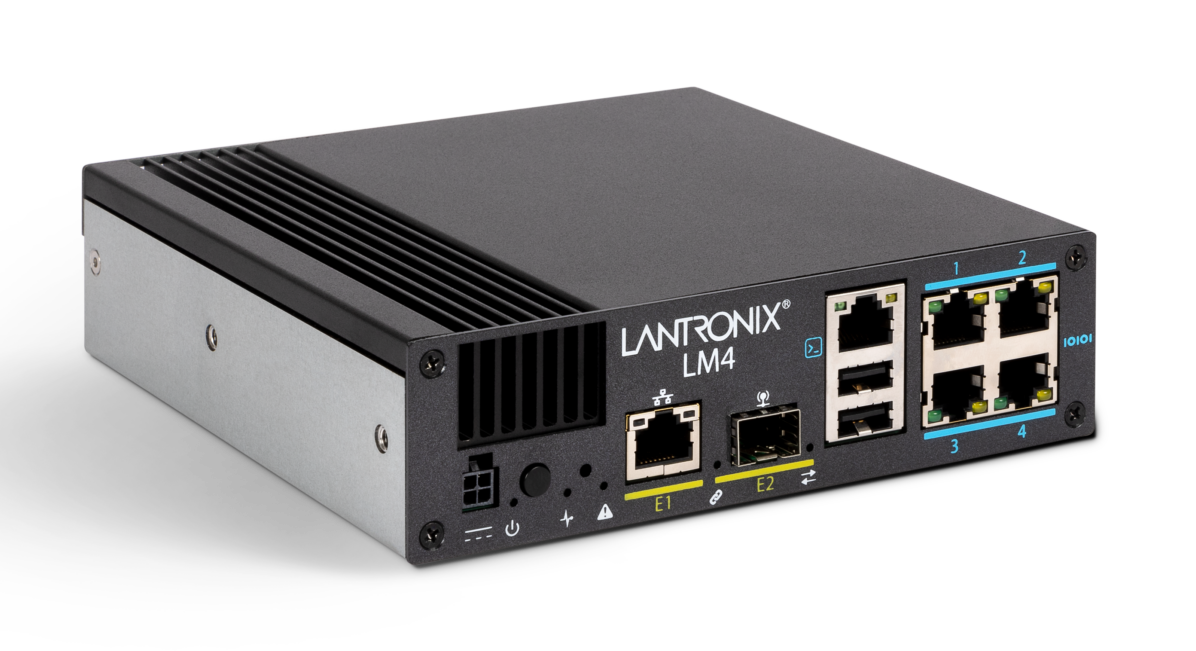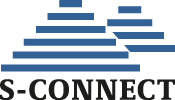Lantronix LM4
console servers


- Network Independent Management
- Patented Automated Actions
- Flexible, Secure Remote Access
Lantronix's LM-Series console servers are the fifth generation of purpose-built network management automation devices. Easy to use, with resilient out-of-band access, onboard processing / storage and LMOS software, the LM-Series serial console servers are deployed in enterprises worldwide ranging from ultra-secure military and financial networks to downtime-intolerant networks in healthcare and energy.
The LM4 is an advanced out-of-band solution that provides access, monitoring and control of network infrastructure that operates whether the network is up or down. With up to four ports of serial console connections for directly managing gear plus support for up to 48 virtual ports, the LM4?s size is deceiving.
Running the powerful LMOS software, the LM4 brings the most advanced out-of-band management capabilities to the edge of your network with enterprise-grade automation, cybersecurity, and compliance functionality.
For more than 20 years, most of our industry-leading solutions for out-of-band management have deployed into data centers or building MDFs (Medium Distribution Frame), while the IDF (Intermediate Distribution Frame) networking closets were often deemed too numerous or too costly to merit their own out-of-band management solutions. Until now.
LM4 with the Lantronix Control CenterYou can access the LM4 and connected devices directly through the CLI or utilize the Lantronix Control Center for a single pane of glass to manage LM-Series devices and automate management of connected devices.
Accessing the advanced features of the LM-Series platform through the Control Center opens new levels of network management automation from real-time data to manage, configure and control network devices and servers. Define custom automated management actions without scripting and apply them across your deployment securely. The Control Center also provides detailed compliance reporting and integration with other centralized tools in the NOC.
Key Local Management Features and Capabilities
| Feature | Capability |
|---|---|
| Access | |
| Heterogeneous Device Access | Secure remote access and native support for any console-managed device |
| Secure Remote Access | Provides access via Secure Shell (SSHv2), integrates with remote authentication and accounting such as TACACS and Radius. Supports additional security features such as source address (IP and caller ID) filtering |
| Out-of-Band Connectivity with WAN Traffic Failover (with external modem) |
The LM4 can use an external cellular modem connected over USB. With the loss of the primary WAN connection, LM-Series devices can provide a tethered WAN traffic failover option by sharing its cellular out-of-band connection with the local router |
| In-depth Device Monitoring | Leverage serial connection to managed device to collect data, either in-band or out-of-band, on hundreds of performance variables every 5 to 30 seconds |
| Environmental Monitoring | Collects and reports device environmental data for temperature and humidity to be used to trending and root cause analysis |
| KVM over Service Processor | Enables local access and control to a remote server (i.e. provisioning, monitoring, troubleshooting, restricting access) without having to deploy external KVM appliances; functions independent of the availability of server?s operating system or the primary network connection |
| Remote Web Access | Offers secure access to remote devices with web-only management interfaces without requiring additional overhead to manage |
| Control | |
| Heterogeneous Device Management | Advanced driver support for remotely managing Cisco, Nortel, 3COM, Juniper, Alcatel, NetScreen, and Tasman routers, switches, and firewalls; TippingPoint intrusion prevention systems (IPS); Garmin GPS devices; Comtech, ND SatCom, and iDirect satellite modems; Iridium and GlobalStar external data modems; Solaris, Linux and Windows servers (console port); Sun, Dell, IBM, HP servers (service processor port); APC, ServerTech, and Baytech power controllers. |
| Robust Automation | Provides automation of routine management tasks through rule-based engine. Includes diagnosis of non-standard operational state based on configurable thresholds, and execution of recovery procedure to restore normal operational state. Can be used to restore a last known good configuration, diagnose and correct failures across multiple devices, and notify IT staff of the problem and recovery action taken. |
| Proactive Maintenance | Supports OS upgrade with verification and locally archives OS images with full rollback support. Power-On-Self-Test (POST) data and diagnosis data (e.g. ? Cisco ?show tech?). Enables password recovery for certain devices through combination of device boot and power management procedures |
| Remote Power Management | Monitors power utilization and controls power to remotely restart a managed device |
| Device Recovery with SurgicalRollback™ | If a configuration change fails, immediately rolls the device back to the last known good configuration; supports full commit and rollback operations |
| Real-Time Log Inspection & Management | Collects and inspects device console data in real-time; Sends alarm or takes predefined recovery action based specific log messages to shorten MTTR |
| Service Level Verification | Uses synthetic transactions to regularly collect network- and application-specific performance data. LM-Series devices locally correlate service-level data with infrastructure performance data to triangulate, pinpoint and correct service-related problems |
| Service Processor Automation | Provides the ability to remotely monitor, manage, diagnose and recover servers, even if operating system has hung or the server is powered down |
| Enforce | |
| FIPS 140-2 | LM-Series software is FIPS 140-2 compliant |
| Session Management | Automates session management to prevent unauthorized access |
| Granular Authorization | Ensures the right users have the right access by enforcing role-based, command-level authorization |
| Complete Logging | Audits all user access, device changes, and session activity for compliance |
System Specifications
| System | |
|---|---|
| Management interfaces: | Supports up to 4 devices via serial (RS-232); One 10/100/1000 BaseT Ethernet interface and one RS-232 console port; One 1-Gbps SFP port |
| Peripheral connectivity: | Two USB-A ports |
| Dimensions and Weight | |
| Height, Width and Depth: | 44.45 mm (1.75 in.) x 158.75 mm (6.25 in.) x 158.75 mm (6.25 in.) |
| Weight: | 1.42 kg (3.13 lbs.) |
| Operating Environment | |
| Power Requirements: | DC input: 9 to 60 VDC Power consumption: Less than 24W |
| External AC to DC Power Supply: | AC Input: 100-240VAC, 50-60HZ, 1.4A DC Output: 12VDC, 3A |
| Environmental | Operating: 0° C to 55° C (32° F to 131° F) at mean sea level, 10% to 90% relative humidity, non-condensing Non-operating: -30° C to 60° C (-22° F to 140° F) at mean sea level, 90% relative humidity, non-condensing |
| Regulatory | |
| Emissions: | FCC class A sub part B |
| Safety: | UL |
| RoHS compliant | |
Product SKUs
| Part Number | Description |
|---|---|
| Product | |
| LM4-4S | LM4, 4 serial ports, AC power |
| LM4-2S | LM4, 2 serial ports, AC power |
| AC plug options available when ordering | |
| Post-Purchase Serial Port Activation | |
| 61-5900-00 | 1 serial port activation |
| Optional External Modems | |
| M114B00FS | LTE CAT. 1 BIS - RS-232 & USB PORTS - 2 I/OS - MPACK |
| M114F002S | EMEA - LTE cat. 1 band 20, 3, 7 - 2G FB band 8, 3 - RS-232 & USB ports - 2 I/Os - Mpack |
| M114F003S | Asia Pacific - LTE cat. 1 band 28, 8, 3 - 3G FB band 1 - RS-232 & USB ports - 2 I/Os - Mpack |
 Kunden, die diesen Artikel gesehen haben, sahen auch
Kunden, die diesen Artikel gesehen haben, sahen auch













 Eigenschaften
Eigenschaften Beschreibung
Beschreibung Weitere Informationen
Weitere Informationen



 Eigenschaften
Eigenschaften Beschreibung
Beschreibung PDF
PDF